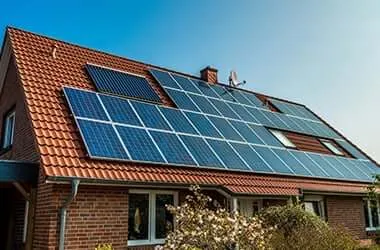Trends and Pricing Analysis for Mono PERC Bifacial Solar Panels in the Current Market
The Price Dynamics of Mono-Perc Bifacial Solar Panels
As the world shifts towards renewable energy sources, solar power has emerged as one of the most promising alternatives. The latest advancements in solar technology have led to the development of mono-PERC bifacial solar panels, which are increasingly gaining attention for their efficiency and economic viability. In this article, we will explore the price dynamics of these solar panels, considering their manufacturing processes, market trends, and factors influencing their costs.
Understanding Mono-PERC Bifacial Technology
Before delving into pricing, it's essential to understand what mono-PERC bifacial solar panels are. Mono refers to monocrystalline solar cells, known for high efficiency due to their pure silicon composition. The PERC (Passivated Emitter and Rear Cell) technology enhances the efficiency of these cells by adding a layer that reflects unabsorbed light back into the cell. The bifacial design allows the panel to capture sunlight from both sides, increasing energy generation, particularly in environments where the ground reflects light, such as snowy or sandy areas.
Current Market Prices
As of 2023, the price of mono-PERC bifacial solar panels has shown significant variability due to various factors. On average, the cost per watt for these panels ranges from $0.30 to $0.50, but prices can fluctuate based on several market dynamics. The increased demand for renewable energy sources has driven manufacturers to scale production, which can help lower costs over time. Additionally, technological advancements and economies of scale achieved in mass production have contributed to the decline in prices.
Influencing Factors
Several factors play a crucial role in determining the price of mono-PERC bifacial solar panels
mono perc bifacial solar panel price

1. Raw Material Costs The price of silicon, which is the primary material used in solar cells, significantly influences the overall cost of solar panels. Fluctuations in silicon prices due to supply chain issues, geopolitical tensions, or increased production can affect solar panel prices.
2. Technological Advancements Continuous improvements in manufacturing processes can lead to significant cost reductions. Innovations that enhance the efficiency of solar cells or streamline production lines can make panels more affordable for consumers.
3. Government Policies Subsidies, tariffs, and incentives for renewable energy can have profound impacts on solar panel prices. Governments around the world are increasingly promoting solar energy through financial incentives, which can shift market dynamics and influence prices.
4. Market Competition The global solar panel market has witnessed a surge in competition, with numerous manufacturers vying for market share. This competition can drive prices down as companies strive to offer the best value to consumers.
5. Installation and Maintenance Costs While the price of the panels themselves is a significant factor, the total cost of solar energy systems includes installation and ongoing maintenance. These costs can vary, impacting the overall economics of using mono-PERC bifacial solar panels.
Future Outlook
Looking ahead, the price of mono-PERC bifacial solar panels is expected to continue its downward trend, driven by advancements in technology and increased competition in the market. As the push for renewable energy grows, more consumers and businesses are likely to adopt solar technology, further driving demand and encouraging innovation.
In conclusion, mono-PERC bifacial solar panels present a compelling option for harnessing solar energy efficiently. While their prices fluctuate based on various factors, their increasing popularity and the continuous evolution of solar technology make them a smart investment for those looking to shift towards sustainable energy solutions. As the industry matures, we can expect enhanced accessibility and affordability of these advanced solar panels, contributing to a greener future.
-
Understanding the Advantages of Solar String Inverters for Your Energy SystemNewsApr.29,2025
-
Choosing the Right PV Inverter: A Comprehensive GuideNewsApr.29,2025
-
The Future of Solar Power: Exploring Bifacial Solar PanelsNewsApr.29,2025
-
The Complete Guide to Solar Panels: Efficiency, Cost, And InstallationNewsApr.29,2025
-
The Best Options for Efficiency and Cost-EffectivenessNewsApr.29,2025
-
Harnessing the Power of Off-Grid Solar Inverters for Energy IndependenceNewsApr.29,2025







